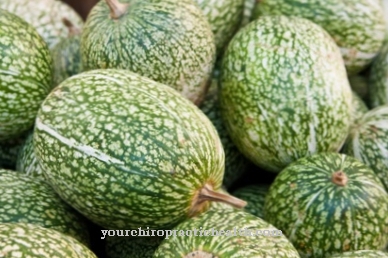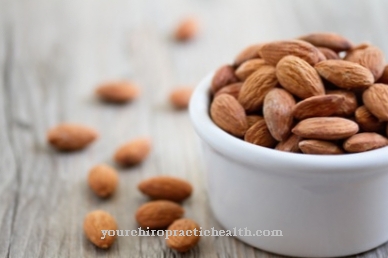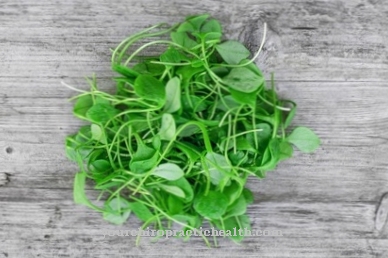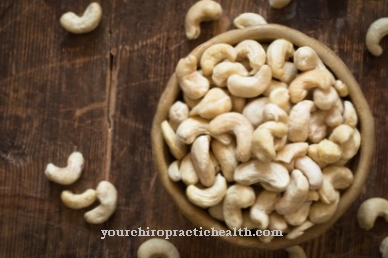That obtained from olives in cold pressing olive oil was probably used in regions of the eastern Mediterranean (Levant) for at least 8,000 years as food and aids, u. a. also used as lamp oil.
Even today, it is impossible to imagine Mediterranean cuisine without extra-class cold-pressed olive oil as a "multifunctional oil" for cooking and frying and for serving many dishes. Mediterranean countries - above all Spain - still produce by far the largest part of the world's olive oil production of around 2.8 million tons annually.
What you should know about olive oil

The first use of olive oil for food preparation and as an aid for other uses, such as lamp oil, is believed by archaeologists to be around 6,000 BC. Dated. This is the region of the eastern Mediterranean.
The millennia-old cultivation of the olive trees resulted in an almost unmanageable variety of varieties. Even today, the Mediterranean countries are by far the most important olive oil producers and exporters. Spain occupies the undisputed top position with more than a third of the worldwide volume of 2.8 million tons annually. Italy is considered to be the world export champion, whose exports by purchasing and processing oil from other producing countries far exceed their own production. The quality of the olive oil produced depends on many factors such as soil conditions, rainfall, harvest time and processing method.
The two most important factors are the time of harvest and the processing method of the olives, which should be carried out in the absence of oxygen and without fermentation processes. Depending on the desired consistency of the oil from strong to mild, the olives are harvested from the beginning of ripening or, alternatively, later when fully ripe. The stages of ripeness can be recognized by the color of the olives, which changes from green to yellowish-brownish to black when the fruit is fully ripe. Depending on the weather and the desired degree of ripeness, the main harvest time is from the end of October to the end of December. According to EU regulation 61/2011, olive oil is classified into eight quality levels.
Only quality levels 1, 2 and 5 are important for the end user. These are extra virgin olive oil (extravergine), virgin olive oil (without the addition of extra or extravergine) and olive oil (without any additives, category 5). Olive oil with the addition of extra virgin is the highest quality oil that has to meet certain quality standards, which catapult the oil upwards, mainly due to the laborious manual work involved in the harvest.
Olive oil in a class of its own is characterized by a yellowish color and nuances of taste that can be described as fruity with a slightly bitter undertone. However, when swallowed, the oil also leaves a typical scratchy feeling in the throat, which is caused by the oleocanthal it contains, an anti-inflammatory and antioxidant aromatic ester with positive health relevance.
Importance to health
A predominantly Mediterranean diet is considered to be particularly beneficial to health. Above all, preventive effects against the main diseases of post-industrial society such as arteriosclerosis, coronary heart disease (CHD), diabetes, various types of cancer and depression can be statistically proven.
The predominantly Mediterranean diet also has a preventive effect against the so-called metabolic syndrome. One of the most important health-promoting factors in the Mediterranean diet is the intensive use and consumption of olive oil. It plays an important role in Mediterranean cuisine and is used for cooking, frying, deep-frying and as a direct component of food in dressings and for preparing starters. The ingredients of high quality olive oils influence the cholesterol balance.
Above all, the consumption of olive oil tends to lower the LDL fraction and increase the HDL fraction within the cholesterol balance, so that a desired lower ratio of LDL to HDL results. The HDLs are lipoproteins that transport excess cholesterol from the vessel walls into the liver, while LDLs transport cholesterol from the liver to the vessel walls. A quotient of LDL to HDL of over 4 is considered a risk factor for the development of vascular calcifications (arteriosclerosis). Olive oil also plays a role in cosmetics.
Applied externally, it has a pleasant, nourishing and anti-inflammatory effect. In ancient times, olive oil was used in the health sector against skin changes externally by rubbing it into the skin and internally by ingestion against inflammation in the body.
Ingredients & nutritional values
| Nutritional information | Amount per 100 gram |
| Calories 884 | Fat content 100 g |
| cholesterol 0 mg | sodium 2 mg |
| potassium 1 mg | carbohydrates 0 g |
| protein 0 g | vitamin C 0 mg |
At 884 kilocalories per 100 milliliters, the pure calorific value of olive oil is similar to that of other vegetable oils, but the oil contains practically no carbohydrates and only a few proteins. Olive oil is not - as often assumed - rich in omega-3 fatty acids, so its health relevance must be based on other ingredients.
Olive oil shines more with a low proportion of saturated fatty acids of 10 percent and a high proportion of monounsaturated fatty acids averaging 73 percent. Monounsaturated fatty acids influence the cholesterol balance and tend to lower the LDL level in the blood serum, so that a desired, lower quotient of LDL to HDL can be achieved. Basically, the fatty acids contained in olive oil also serve as carriers of the fat-soluble vitamins A, D, E and K.
Intolerances & allergies
The consumption or external use of olive oil only rarely triggers food intolerance or even allergic reactions. The triggering allergens are usually proteins, which are in the detectable range even with good quality olive oils.
In very rare cases, treatment of the skin with olive oil can lead to skin irritation and even eczema. Discontinuing treatment will soon relieve symptoms. In the rare cases of intolerance after consuming olive oil, symptoms such as stomach pain, bloating, flatulence, vomiting and diarrhea usually arise.
Shopping & kitchen tips
Olive oils of the highest quality extra or extra virgin from modern production usually keep the longest, up to 24 months if properly stored. Olive oil of a lower quality level becomes rancid and inedible more quickly.
Olive oil can best be stored in a dark place at a temperature of 10 to 16 degrees. The vessel should be tightly closed and protected against UV rays from the sun. The seal is important to prevent oxidative processes in the olive oil by excluding air, which changes the taste and makes the oil rancid more quickly. The same applies to protection from exposure to light. Extreme caution is advised with regard to quality, as large-scale frauds have been uncovered time and again.
It is highly recommended to use organic qualities and to carry out a smell and taste test. High-quality olive oil of the extra class is not only suitable as a carrier for dressings or for preparing antipasti (e.g. pickled peppers), but also for cooking and frying.
Preparation tips
Olive oil of the extra class is particularly suitable for the production of antipasti, e.g. B. by inserting certain types of vegetables, but also for the preparation of salad dressings or other dressings or dips that can be made in a wide variety of flavors. Contrary to the popular opinion that olive oil is not suitable for cooking and frying, olive oil is very well suitable for frying and even deep-frying. However, the temperatures should not exceed 180 degrees.
























.jpg)



